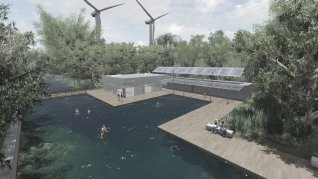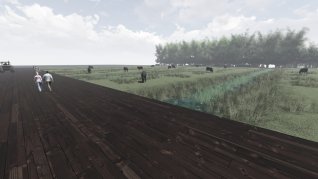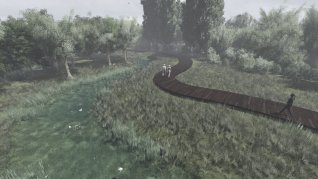Sam Scholes
The Wyre Flood Park is a concept based on re purposing land that is under the threat of flooding, through a reworking of the relationship between anthropocentric and biocentric systems. There is a long tradition in the Wyre Valley for building and living by the water. For centuries local authorities have built levees in order to regulate water levels and prevent regular flooding. The Flood Park is an alternative to the traditional separation of water and land and instead attempts to integrate the two. In response to opposition against floodplain development and the growing concern for the loss of local ecology, this project proposes an approach built on a loose arrangement of saturated landscapes that thrive on saline and water logged conditions. The result is a series of water management systems which harvest and treat flood water so it can be utilised for a range of anthropocentric functions.
The concept is made up of three separate systems. Saline pastures planted with halophytic grasses are the first to be covered by the rivers brackish flood water. Water is filtered through a row of swales until the pasture is dry enough for livestock to graze (See figure 1). The clean water is redirected to the second system and heated using the power generated by wind turbines. Salt is precipitated out of the solution and harvested and fresh water is produced as a by-product of this process, which then forms a source of clean water for public swimming (See figure 2). Fresh water is drained from the swimming canals and pumped to a stream. This is integrated into a system of riparian woodlands, which provide ecological diversity in the open landscape of the flood plain. (figure 3)



